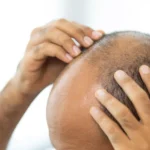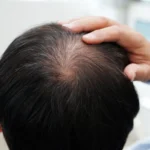THE SCIENCE BEHIND LIPOSUCTION

Liposuction; in our quest for a sculpted, contoured body, we may encounter stubborn pockets of fat that seem resistant to diet and exercise.
This occurs when our energy input exceeds output, leading to the accumulation of fat deposits in various areas of the body. These deposits are primarily found either just beneath the skin or nestled among internal organs.
How Can Liposuction Help?
Liposuction is a procedure designed to target and remove fat deposits located directly under the skin.
Common areas treated include the abdomen, thighs, buttocks, love handles, arms, and under the chin. The procedure involves the use of a small, hollow tube called a cannula, which is inserted under the skin through tiny incisions.
Before suction begins, a solution containing a numbing agent is injected into the fatty tissue. This solution not only numbs the area but also constricts blood vessels, minimising bleeding.
Liposuction Procedure
- Preparation: Before the actual suction of fat begins, the targeted area is infused with the numbing solution. This step serves to make the fat layer swollen and firm. This firmness facilitates more precise fat removal.
- Techniques for Fat Melting: Various techniques exist to melt the fat before suctioning, each with its own advantages. These include ultrasound-assisted liposuction (such as Vaser), powered liposuction using vibration, and water jet liposuction. These methods help break down fat cells, making them easier to suction out and reducing trauma to surrounding tissues.
- Fat Removal: Once the fat has been numbed, the surgeon inserts the cannula through small incisions in the skin. The cannula is connected to a suction device that removes the liquefied fat from the body. Careful attention is paid to ensure that fat is removed evenly and proportionately, which is imperative for achieving a natural and aesthetically pleasing result.
- Post-Procedure: After fat removal, the small incisions made for the cannula are typically left open to allow any excess fluid and blood to drain. Patients may be required to wear compression garments to reduce swelling and support the newly contoured body areas as they heal.
Factors Affecting Results
The effectiveness of liposuction depends on several factors:
- Amount of Fat: The success of liposuction hinges on how much fat is present under the skin in the treated area. Typically, only 70 to 80 percent of fat in a given area can be safely removed to avoid unevenness or excessive trauma to the skin.
- Proportionate Removal: Achieving a smooth and proportionate contour also depends on how evenly fat is removed. The surgeon’s skills and technique play a crucial role in ensuring that fat removal is uniform across the treated area.
- Skin Elasticity: The quality and elasticity of the skin also influence the final result. Younger patients with good skin elasticity tend to achieve better outcomes as their skin can better conform to new contours.
Liposuction Safety and Considerations
Liposuction is generally considered safe when performed by a qualified and experienced surgeon. However, like any surgical procedure, it carries certain risks such as infection, fluid imbalance, and changes in skin sensation. Minimising these risks require meticulous surgical technique and the patient’s adherence to post-operative care instructions.
Individuals considering liposuction should schedule a consultation with a qualified and experienced medical surgeon to understand the procedure’s benefits, risks, and expected outcomes based on their unique body characteristics and goals.
About Alaxis Aesthetics Clinic
Alaxis Medicare has been a trusted provider of liposuction procedures for 20 years. Schedule an appointment via WhatsApp at +65 81257655 for an in-person consultation to discuss your aesthetics goals.




